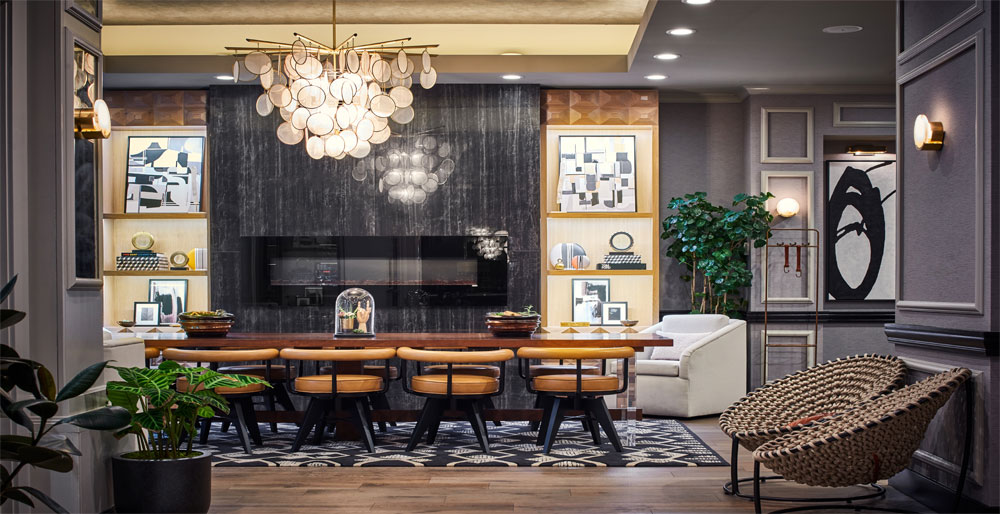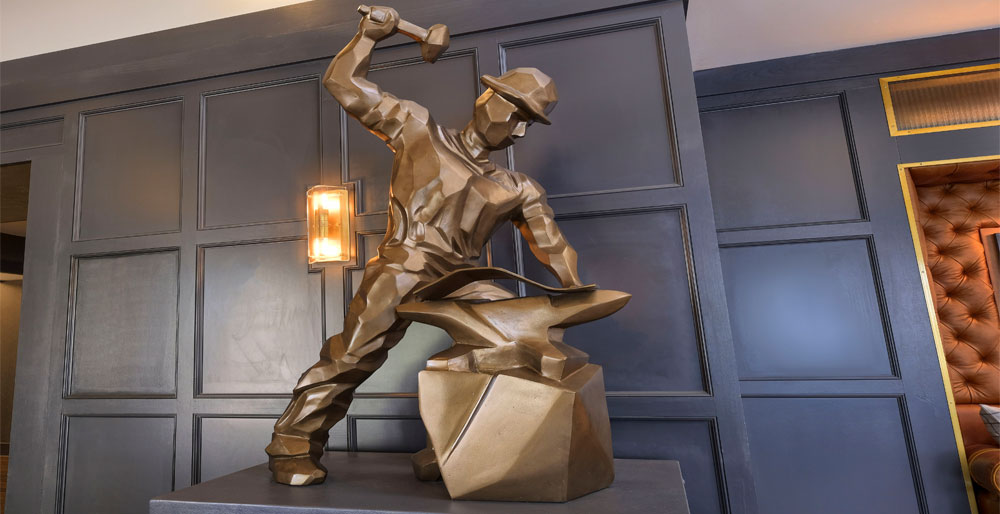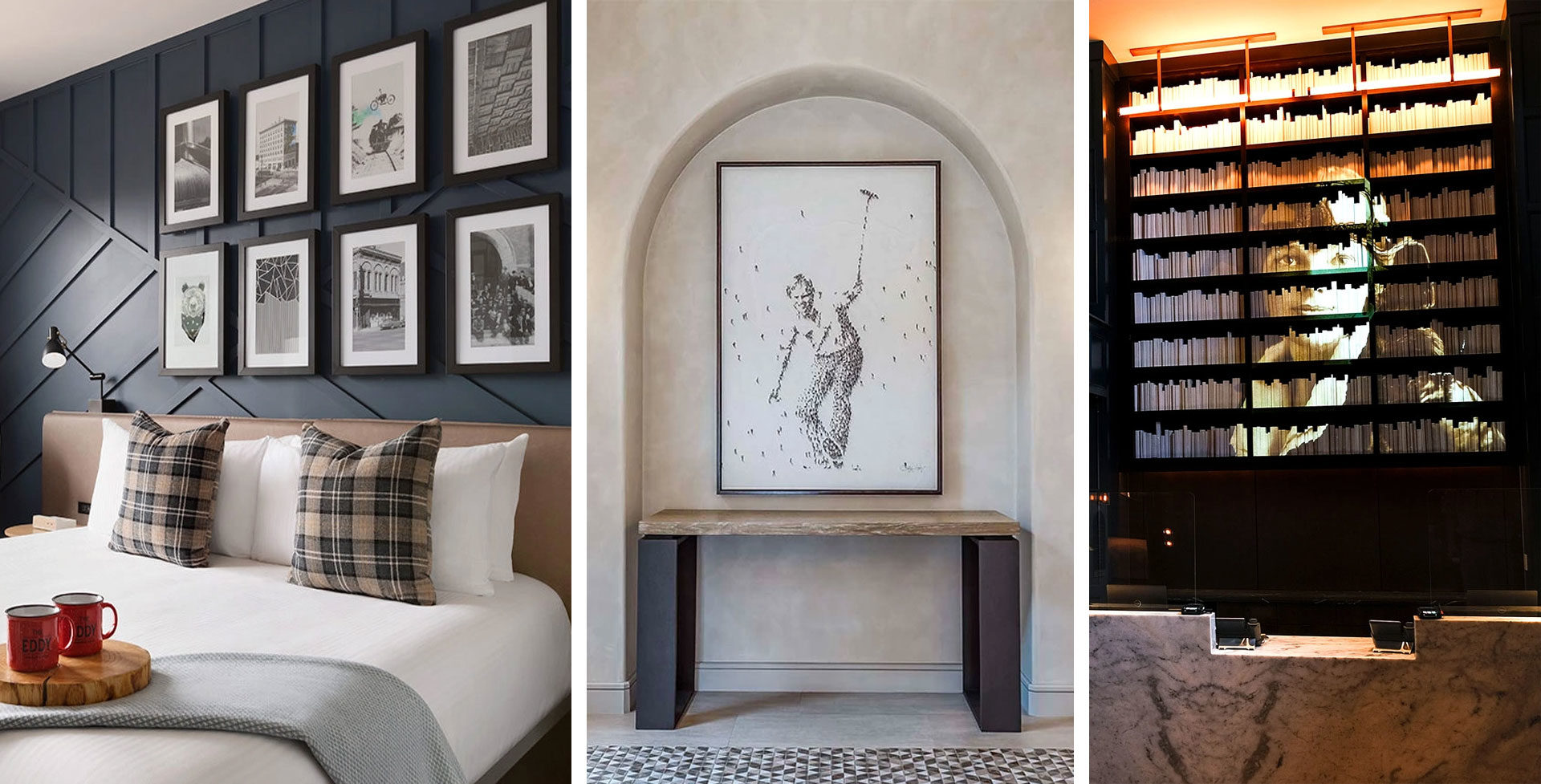“Authentic” may be the most overused term in the industry, but it’s what many strive for in their design projects. Successfully achieving an authentic, lived-in feeling, however, is elusive and difficult to describe.
“It needs to align with your values to create that connection,” said Molly Swyers, chief brand officer of 21c Museum Hotels, KBAA’s partner in the Social Hub at HD Expo where the panel discussions on “Designing with Soul” and “Lifestyle and Beyond” took place. “It can’t just be transactional.”
From creating new spaces from scratch, to rehabbing existing buildings, here are five takeaways from the panelists on how to create a coveted, guest-centric, memorable impression.
1. Find ways to keep the space relevant.
While new builds certainly have their own set of challenges, older hotels have the challenge of striving to stay relevant and fresh, while still established.
“Design needs to be improved year over year, rather than that cycle of every seven years,” said Joue-Yie Chou, partner at Post Company.
That doesn’t necessarily mean a big rehaul, though; small changes can be made to keep the spaces fresh and in use. One of those ways, of course, is through contemporary art (which 21c Museum Hotels’ Swyers vouched for), as art is always “of the moment.”

2. Dig deep in research and craft a narrative.
Today’s guests are thoughtful and discerning, and aren’t looking for cookie cutter travel experiences—which means they also aren’t looking for cookie-cutter hotels. They want something personal and localized, and the only way to avoid that fate is by doing proper research and making sure your brand matches the location. Using that ample research, you can begin to develop a narrative or a storyline that can be referenced throughout the entire process.
At Post Company’s The Lake House property in New York, that meant “crafting a narrative that the property had always been there, but it’s evolving over time. The property has been generational and that’s reinterpreted for different generations throughout the property.”
Many of the designers use antique or vintage finds to add a sense of history to properties, but cautioned against ending up as a “one-note antique show.”
“How do you make something new and make it feel warm and layered?” said Maija Kreishman, principal at Michael Hsu Office of Architecture. “That’s the challenging experience of authenticity.”
Technology has rooted itself in hospitality and using tools such as virtual reality or 3D rendering (which Kreishman does for every space) can help you better explain your narrative and create buy-in with the client.
3. Get to know the community.
Sense of place and community is vital to a layered, authentic experience; that can be done during the research phase, by connecting with locals, or even through programming.
At Salt Hotels’ Hutton Brickyards property in Kingston, co-founder Kevin O’Shea takes their role as the largest employer in the city seriously, supporting local farmers and even creating a “Hutton Hangout Night” where local musicians, food trucks, vendors and artists come on the property for a community night with locals and guests.
Similarly, Post Company’s Inness property features a golf course, the club for which has a “low velvet rope.”
“We want to be inclusive,” Chou says. “A large component of the property is public facing. We want to make sure the local residents that were already there feel the barrier is fairly porous.”

4. Avoid low-hanging fruit.
Nearly every market has an archetype, a stereotype that every traveler knows. As a designer trying to create an authentic experience, try to avoid that low-hanging fruit at all costs. Rather than creating a honky-tonk that serves hot chicken in Nashville, try working with known contemporaries in the city, Jou-Yie said, from artists to musicians to chefs. Through your research, figure out the local tropes and discount them, then dig deeper. The result? A more layered and authentic experience for guests.
“Guests are smart. You have to come up with something original and true for the space, that isn’t some passing-by of an idea,” said Diana Martinez, senior design director at Kimpton Hotels. “It needs to be grounded in something real.”
For example, Michael Hsu’s Austin hotel, Uchi, is located right on South Congress Avenue, famed for its neon signs. While it may have been the easy route to create a neon sign to fit in, Kreishman said they knew from the beginning it would feel too literal and instead designed a light fixture with a nod to the South Congress staple.
“It’s a lot of listening, trying to search a lot deeper so it’s not one note,” she said.
5. Embrace imperfection.
Part of designing with the goal of authenticity means trial and error will be involved—and that’s OK.
“You’re going to get something wrong at some point. The minute you design something, people will come and tell you what you want,” O’Shea said. “Don’t take the easy way out. Look at, how do you dig deeper, how do you create a more authentic moment.”
Instead, celebrate imperfection and find satisfaction in those happy accidents.
“There are instances where that feels OK and you can see the hand in the worst ways and best ways,” Kreishman said. “It’s about allowing those moments to happen and those start to feel true.”
